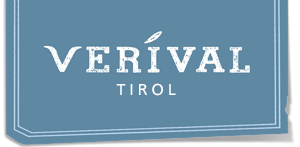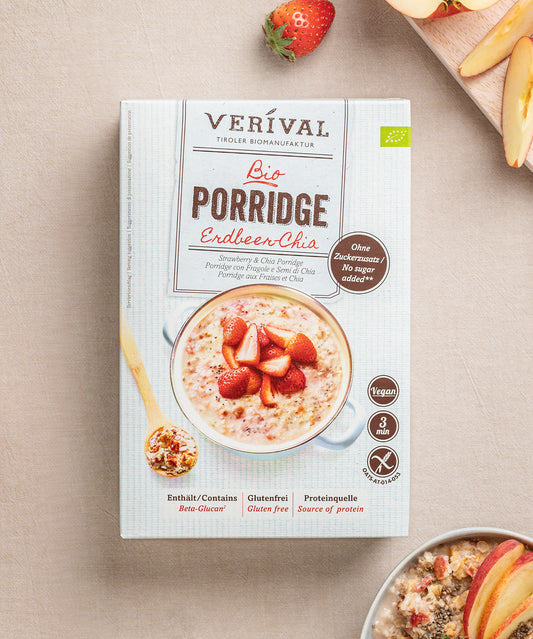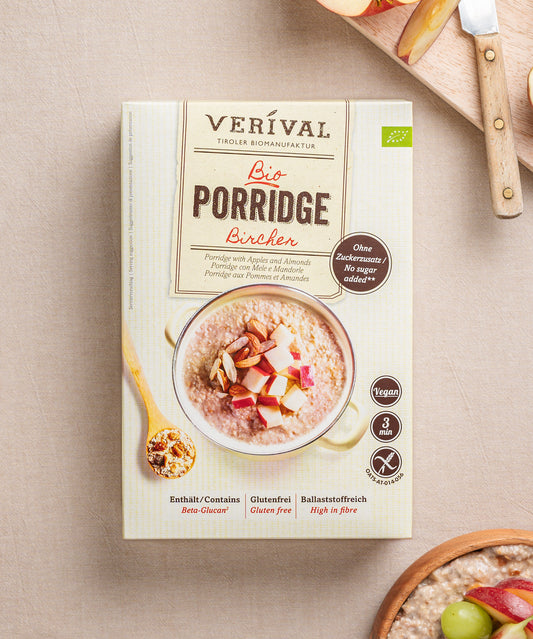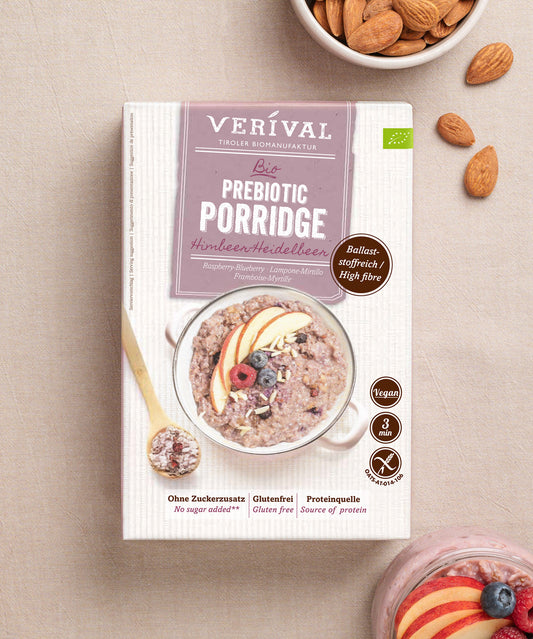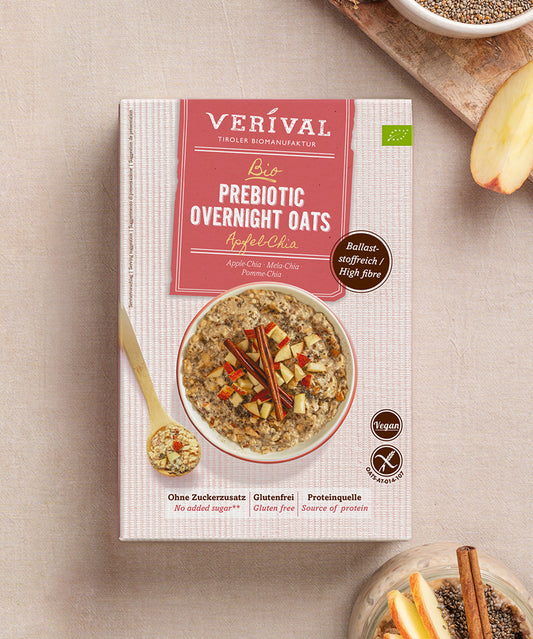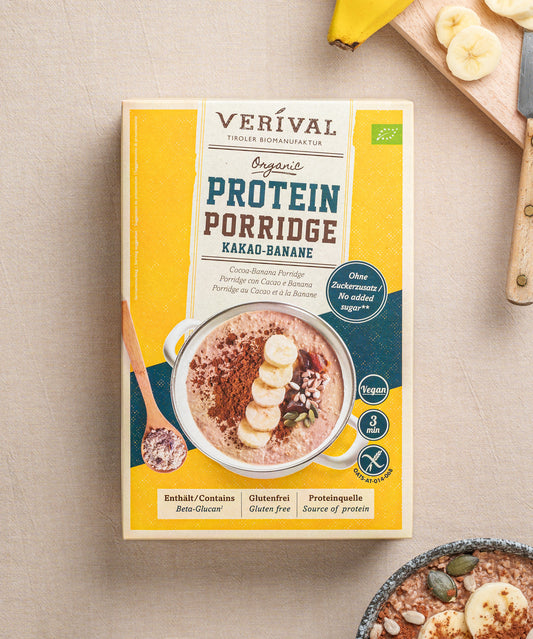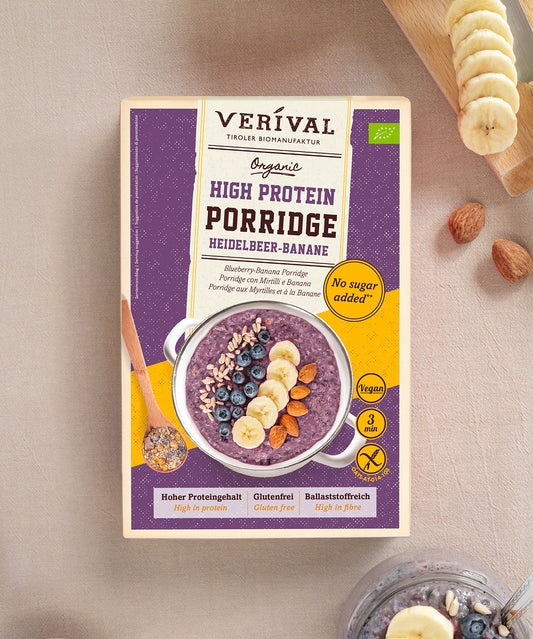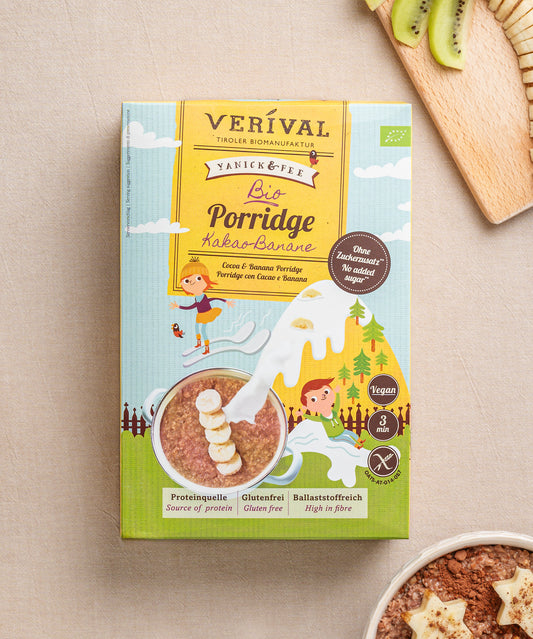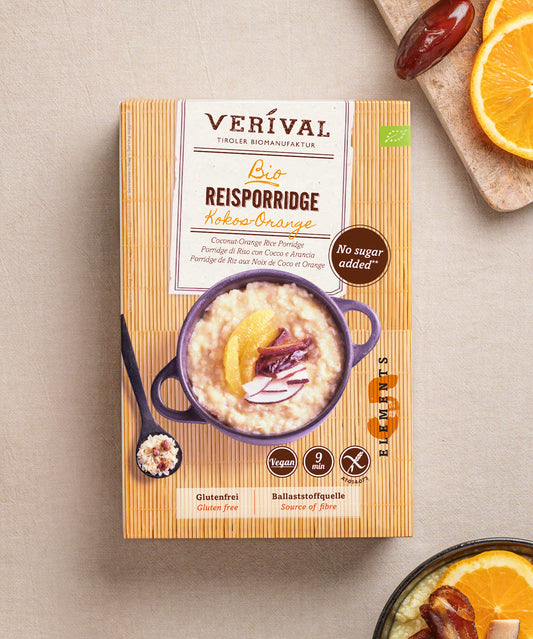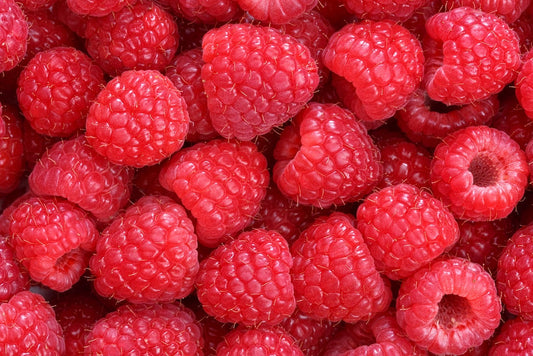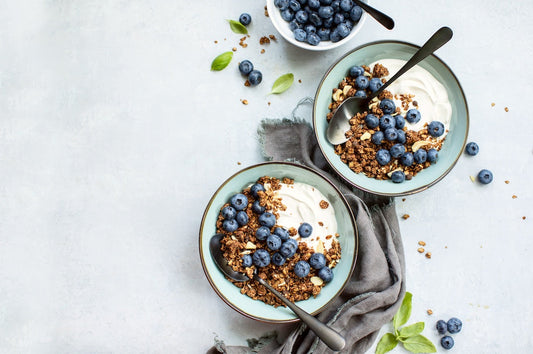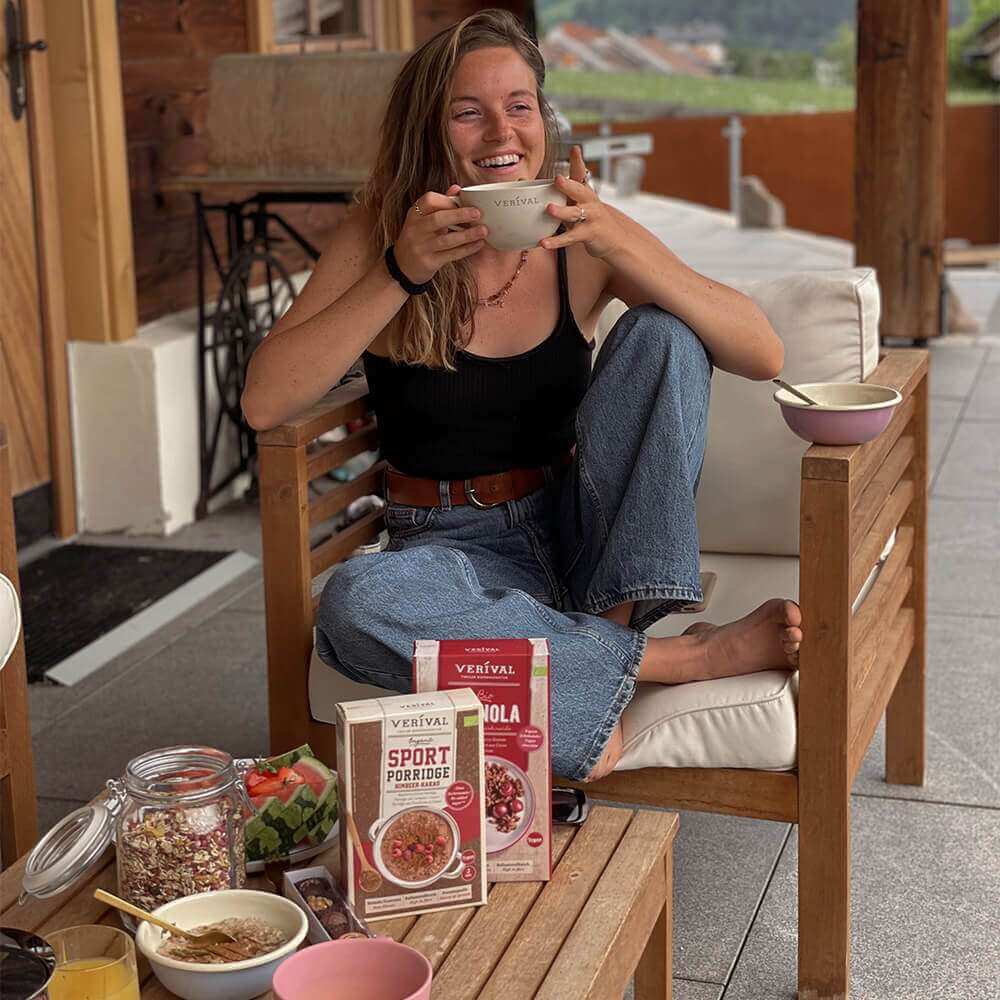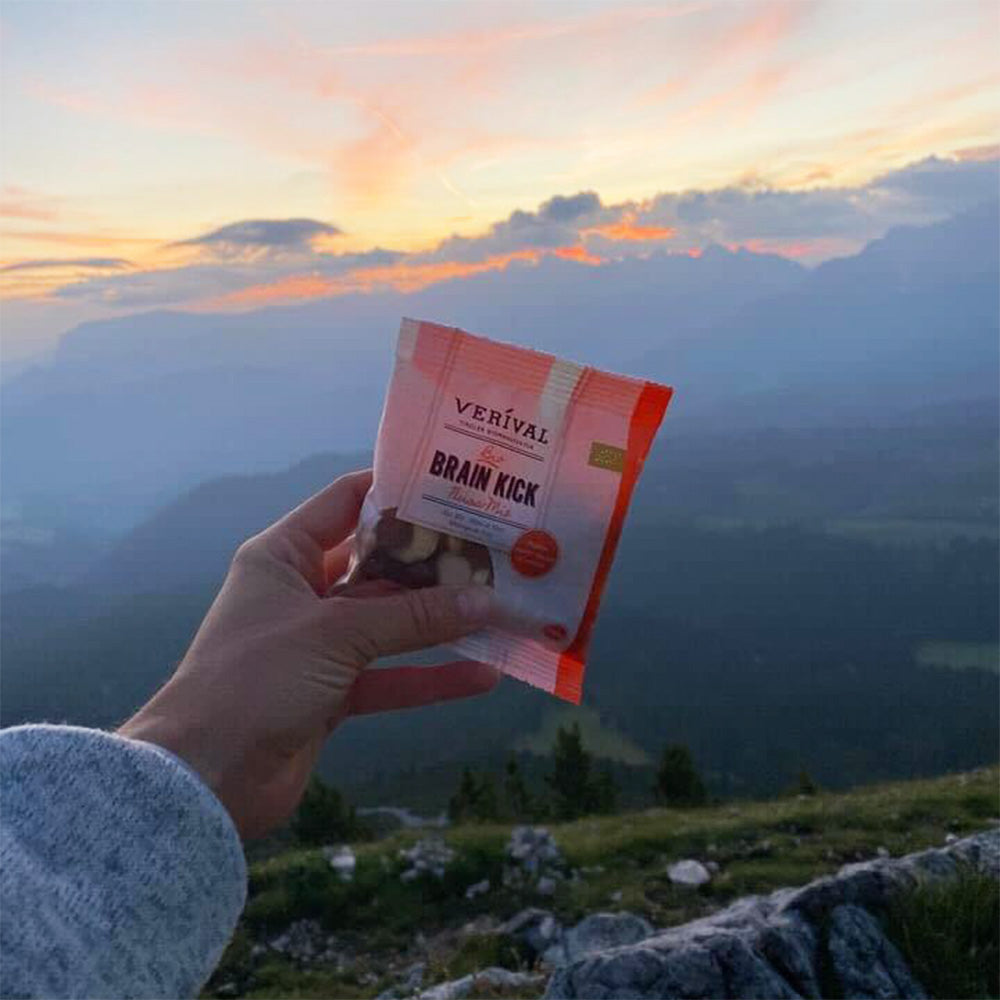Iron, fluorine, sodium, potassium, copper, manganese, chromium – we have all heard of these nutrients, but we don't know what exactly they do for us. Why are they important and what can oats do for us in this regard? You will find the answers here!
In addition to basic nutrients such as protein, fat, and carbohydrates, which are at the top of every nutrition label, humans also absorb vitamins and minerals with their food.
It is well known that minerals are needed by the body, but so-called trace elements are also talked about again and again – but what exactly are trace elements and how do they differ from minerals? By definition, trace elements are no different from minerals at all, but are part of them.
Depending on the quantity required, minerals are divided into the two groups of bulk and trace elements. In common parlance, however, “minerals” are actually always referred to as bulk elements and trace elements are placed in a separate group.
Nutrient-rich breakfast from VERIVAL
What exactly are minerals and bulk elements?
Minerals are essential for many bodily functions, such as the regulation of the water balance, the transmission of stimuli in the nervous system and energy metabolism. However, humans also need minerals for body parts where deficiencies are more quickly noticeable, such as skin and hair, as well as bones and teeth.
Minerals are therefore essential nutrients for the human body. However, they are inorganic nutrients, which means that the human organism cannot produce them itself, but is dependent on them being supplied with food.
The human body consists of approximately 95% oxygen, carbon, hydrogen and nitrogen. Of the remaining 5%, more than 0.01% is made up of the six bulk elements: calcium, chloride, potassium, magnesium, sodium and phosphorus.
Minerals are referred to as bulk elements if their proportion in the body is over 50 milligrams per kilogram of body weight. At the same time, humans must take in several grams of bulk elements daily. Valuable bulk elements such as magnesium, phosphorus, copper and many more can be found, for example, in VERIVAL oat flakes.
What exactly are trace elements?
In contrast to bulk elements, trace elements make up less than 0.01% of body weight. Therefore, only a small daily intake of less than 100 milligrams is necessary. Nevertheless, trace elements should not be neglected because they contribute significantly to hormonal and enzymatic reactions. Trace elements are present in many proteins.
What minerals are there, what are they important for and how much of each should we consume?
Bulk elements
| Bulk element | Effect | Milligrams (mg) |
| Calcium | Bones & teeth | 800-1000 mg/day |
| Potassium | Water balance & protein formation | 2000 mg/day |
| Magnesium | Bone formation | 300-350 mg/day |
| Sodium | Water balance & muscles | 1500 mg/day |
| Chloride | Water balance | 750 mg/day |
| Phosphorus | Bones & teeth | 1200 mg/day |
Recommended daily allowance for bulk elements (milligram = mg ; microgram = mcg)
Trace elements
| Trace element | Effect | Milligram (mg)/ microgram (mcg) |
| Boron | Bone structure | 3 mg/day |
| Chromium | Fatty acid synthesis & carbohydrate metabolism | 50-200 mcg/day |
| Iron | Blood formation | 10-15 mg/day |
| Fluorine | Bones & teeth | 1-4 mg/day |
| Iodine | Thyroid gland | 180-200 mcg/day |
| Copper | Formation of red blood cells | 1.5-3 mg/day |
| Manganese | Energy production & bone formation | 2-5 mg/day |
| Molybdenum | Metabolism | 50-100 mcg/day |
| Selenium | Strengthening of the immune system | 50-70 mcg/day |
| Vanadium | Metabolism | 1-2 mg/day |
| Zinc | Growth & wound healing | 12-15 mg/day |
Recommended daily dose for bulk elements (milligram = mg; microgram = mcg) – Source: German Nutrition Society
Nutrient-rich breakfast from VERIVAL
How can a deficiency of bulk and trace elements occur?
Of course, a lack of minerals always stems from the diet. But there are some external factors which affect the food and lead to different nutritional values in the same food: agricultural growing conditions are constantly changing and not at all for the better in terms of the quality of food.
This is because many plants now have a lower mineral content, such as zinc and selenium. Furthermore, the nutrients in plants naturally depend on the soil in which they grow – so there may be a natural undersupply of trace elements in some regions; for example, there is a lack of iron and iodine in the soil in Alpine valleys and the Alpine foothills.
Excessive sweating or diarrhoea can also damage the electrolyte balance and lead to a deficiency of minerals. If the deficiency is only temporary, the body can compensate for it by excreting fewer minerals and also absorbing more from the intestines. However, a prolonged deficiency can lead to a weakened immune system and illnesses.
In order to avoid low-quality products and to manufacture only high-quality products, we place a high value on organic farming and sustainable production in our VERIVAL production.
Organic farming already makes an important contribution to this by, for example, avoiding the use of chemical pesticides and artificial fertilizers.
That is why we are very proud that we rely on the many advantages of organic farming for our VERIVAL breakfast products and ensure that we treat our valuable habitat as gently as possible. To ensure that your body is always supplied with sufficient minerals and trace elements, we have a VERIVAL recipe tip for you here. With overnight oats with chia seeds, you won't stand a chance of developing a mineral or trace element deficiency!
ORGANIC breakfast from VERIVAL
How many minerals are contained in oats?
Oats provide many minerals and vital trace elements and can therefore be highly recommended as a health-promoting food. Eating a bowl of porridge in the morning provides a quarter of your daily vitamin and mineral requirements. Developed by the Scots thousands of years ago – rediscovered and reinterpreted by us at VERIVAL!
100 grams of oats contain
Healthy breakfast with porridge from VERIVAL
If you are a fan of a hot breakfast, you can definitely eat meat and fish (in moderation!) with a clear conscience, as these foods also contain essential trace elements such as magnesium, potassium, iron and selenium. But now that we have found out that oats contain a lot of minerals, we want to show you why porridge for breakfast is so healthy:
The body needs to expend less energy to digest warm breakfast foods like porridge. This takes the strain off your body, strengthens your immune system and boosts your metabolism. What's more, the nutrients in warm breakfast foods are better absorbed.
You can vary your porridge with fruits such as apples, bananas or berries, with nuts such as hazelnuts, cashew nuts or seeds such as chia seeds.
The warm oat meal is therefore not just a food trend, but has much more to offer – for brunch lovers, those with a sweet tooth, high-protein fans, vegans and co!
